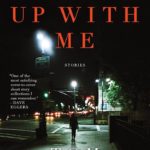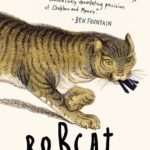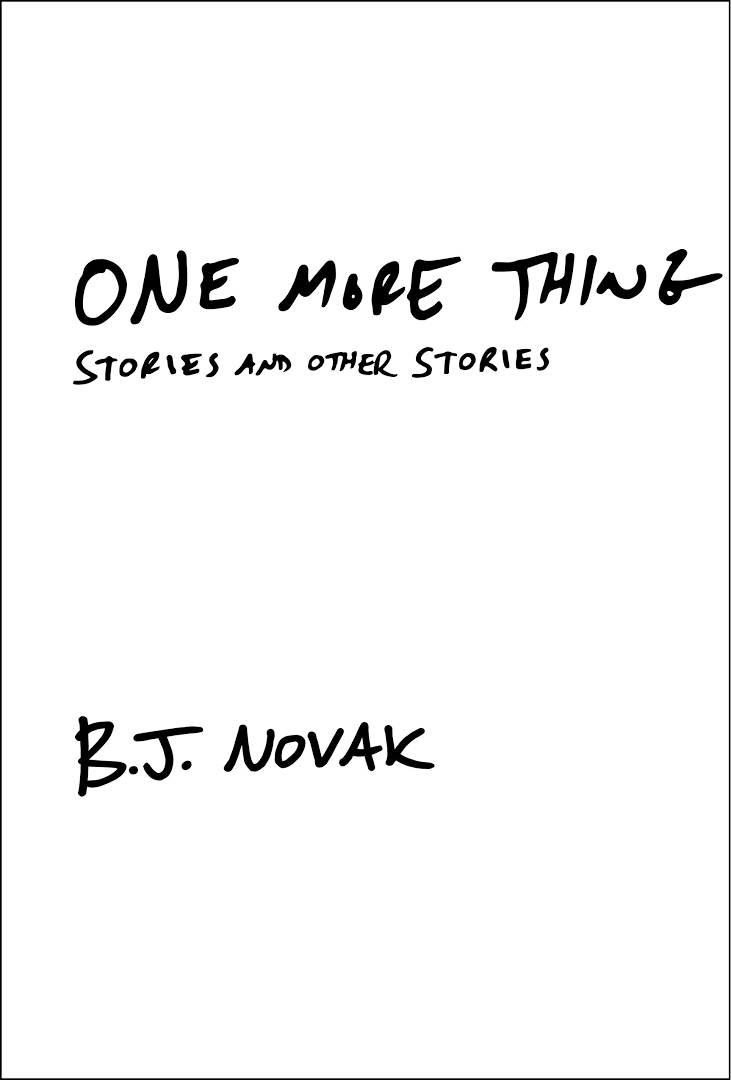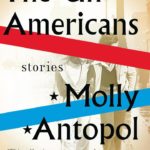Nancy’s Pick
December 2014
The House at Sugar Beach: In Search of a Lost African Childhood
A Memoir by Helene Cooper
July 2009
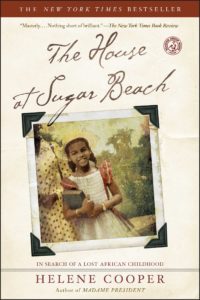 Helene Cooper, a well-respected journalist, grew up in Liberia’s upper Congo class. The author traces her ancestry back to being a descendant of two Liberian dynasties. Her ancestors who were freemen sailed from New York in 1820 to found Monrovia.
Helene Cooper, a well-respected journalist, grew up in Liberia’s upper Congo class. The author traces her ancestry back to being a descendant of two Liberian dynasties. Her ancestors who were freemen sailed from New York in 1820 to found Monrovia.
The author grew up at Sugar Beach, a 22 room mansion by the sea. Her childhood was filled with servants, flashy cars, a villa in Spain, and a farmhouse in the country. The author admits that she knew very little of Liberia and its history other than as “ a scary place… I had no idea it began with freed slaves from America.”
At thirteen her privileged childhood ends when an April 20,1980 soldier led coup assassinates President Tolbert and kills the cabinet. The Congo class is hunted and Helene, her mother, and sister flee Liberia to come to America. The author shares the family’s journey to survive in America. She includes detailed stories about her father, family, and people left behind in Liberia.
The House at Sugar Beach is a personal and honest memoir that examines her violent social class country. Helene Cooper’s story telling captures the reader to finish the book and then continue to read more about the voyage of the freeman, the settlement, and the past and present struggles of Liberia.
Bill’s Pick
November 2014
The Short and Tragic Life of Robert Peace: A Brilliant Young Man Who Left Newark for the Ivy League
Jeff Hobbs
Published September 2014
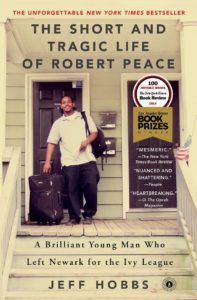 This biography examines the life of a man of color, Robert Peace, who was born and raised in Orange, New Jersey. Peace’s life story is recounted by his college roommate, who interviewed many of Rob’s friends, family, teachers, and associates and carried out comprehensive research.
This biography examines the life of a man of color, Robert Peace, who was born and raised in Orange, New Jersey. Peace’s life story is recounted by his college roommate, who interviewed many of Rob’s friends, family, teachers, and associates and carried out comprehensive research.
At its most basic level and as succinctly set out in the book jacket overleaf, Peace’s story is that of a man who “was born outside Newark in a ghetto known as ‘Illtown.’ His unwed mother worked long hours in a kitchen. His charismatic father was later convicted of a double murder. Peace’s intellectual brilliance and hard-won determination earned him a full scholarship to Yale University. At college, while majoring in molecular biophysics and biochemistry, he straddled the world of academia and the world of the street, never revealing his full self in either place. Upon graduation from Yale, he went home to teach at the Catholic high school [St. Benedict’s Preparatory School, Newark, NJ] he’d attended, slid [more deeply] into the drug trade, and was brutally murdered at age thirty.” Hobbs tells “the whole story” of the man.
Hobbs’s writing is clear and effective; it reveals compassion, but it is also expressive of the frustration that the author and many of Peace’s associates felt and continue to feel about the choices that Rob made. At its heart, Hobbs’s account tells of a brilliant, complicated young man, who lived in two worlds – the one he was born to and which he thought of as “real” and the one he aspired to and where his intellect took him. Those whom Peace loved and cared most about wanted him to choose the latter, the tragedy of his life was that he could not.
Chris’s Pick(s):
October 2014
The Art of the Short Story
Stay Up With Me, Tom Barbash; Published 09/10/13
Bobcat, Rebecca Lee; Published 06/11/13
One More Thing, BJ Novak; Published 02/04/14
The Un-Americans, Molly Antopol; Published 01/27/14
I am a fan of the short story writing genre. Alice Munro, of course, is the grand master of the short story, and t o discuss this genre without giving her a mention is impossible—she is simply a genius.
But here are four new writers of the short story. I read these four collections over the course of this year and felt they all deserved an acknowledgement, though I will concentrate on the most recently read, Molly Antopol’s The Un-Americans. (Of the four, BJ Novak’s was my least favorite; it is often very funny; often profane; but too often, for me, downright silly. Here is a hint, though– read it from beginning to end or you will miss the little inside jokes he sneaks in throughout the book.)
Barbash and Lee are just remarkable writers; their stories are heartfelt and true. I loved “Bobcat” so much I purchased it after reading the library copy so I could have it for myself.
Molly Antopol is a young writer, one of the winners of the “5 Under 35” National Book Awards for new young fiction authors; this is her first book. But her youth is nowhere evident in her writing. The wonderful thing about a great short story writer is the ability to compress an event, or even a lifetime, into just a bit of space where every written word is a thoughtful, measured choice by the author. I found myself savoring so many of Antopol’s beautifully turned phrases and paragraphs. This is a writer of “seismic talent” exclaims author Adam Johnson (The Orphan Master’s Son), and he is right.
Many of Antopol’s stories are derived from her own family history, with the characters brought forth from Jerusalem, Prague, the Ukraine. The common bond in the stories is the link between parents, or grandparents, from the “Old World”, and their children who have left to come to America (thus the book’s title). The stories of courage, love, anguish, hope, and despair are unique to each character, but also universal. We recognize, and then relate. Each story is interesting; some I loved more than others. But the first story, The Old World, and especially the last, Retrospective, are so wrenchingly sad and beautiful you want to reread them immediately, even though your heart still feels trampled upon.
Karen’s Pick:
September 2014
The Light Between Oceans
M.L. Stedman
Published July 31st 2012 by Scribner
 This first no-vel by M.L. Stedman is a beautifully written book with a sensitively told story. It takes place on Point Partageuse, Australia during the 1920s. The Light Between Oceans is a love story, a mystery and a Greek tragedy that will draw you in from the first line.
This first no-vel by M.L. Stedman is a beautifully written book with a sensitively told story. It takes place on Point Partageuse, Australia during the 1920s. The Light Between Oceans is a love story, a mystery and a Greek tragedy that will draw you in from the first line.
On the day of the miracle, Isabel was kneeling at the cliff’s edge, tending the small, newly made driftwood cross.
M.L Stedman does an amazing job of character development. Tom Sherbourne the Janus Rock lighthouse keeper, and a World War I survivor, and his buoyant and loving wife Isabel are depicted in a way that makes us care about them and the moral dilemmas they face.
Sometimes life turns out hard, Isabel. Sometimes it just bites right through you. And sometimes, just when you think it’s done its worst, it comes back and takes another chunk.
The images rendered by Stedman’s of the island off the western coast Australia are beautiful and the symbolism throughout the book is poetic. We learn that the Janus lighthouse is not only a beacon for those travelling on the treacherous waters surrounding the shore but also for the dangerous choices made by those on the land on which it stands.
There are no easy answers to the questions the reader will confront in this book. We soon realize that many of the bad decisions that are made by Tom and Isabel, are for what they believe are the right reasons. The reader will find they will be in disbelief by many of the choices being made. However, we are sympathetic and find that passing judgment makes us uncomfortable.
The Light Between Oceans will make you cry and smile, it will make you care about it’s characters, it will take you to a beautiful and dangerous remote island in the 1920’s and it will not allow you to put it down.
Nancy’s Pick:
August 2014
The Boy Who Said No: An Escape to Freedom
Patti Sheehy
Published June 4, 2013
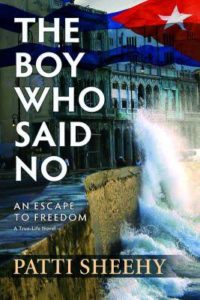 The Boy Who Said No is the true story of a young boy, Frank Mederos, in Cuba during the change that became the Castro regime of rule. The book is a first hand account of a Cuban boy’s life and the difficulties that the Cubans endure. The book provides an insight as to what life is like as Communism in the 60’s in Castro’s Cuba is just taking root. The story reinforces that the human spirit will take extraordinary risks to flee oppressions to seek freedom. The author’s writing makes the reader feel the struggles that Frank Mederos, his family, and all the Cuban citizens experience at the loss of freedoms.
The Boy Who Said No is the true story of a young boy, Frank Mederos, in Cuba during the change that became the Castro regime of rule. The book is a first hand account of a Cuban boy’s life and the difficulties that the Cubans endure. The book provides an insight as to what life is like as Communism in the 60’s in Castro’s Cuba is just taking root. The story reinforces that the human spirit will take extraordinary risks to flee oppressions to seek freedom. The author’s writing makes the reader feel the struggles that Frank Mederos, his family, and all the Cuban citizens experience at the loss of freedoms.
The Boy Who Said No is that kind of book that as the reader, I have to finish quickly, but at the end I want more! Good news, there is a sequel coming in September 2014.
Nouhad’s Pick:
July 2014
I am Malala: The Girl Who Stood Up for Education and was Shot by the Taliban
Malala Yousafzai and Christina Lamb
Published October 8, 2013
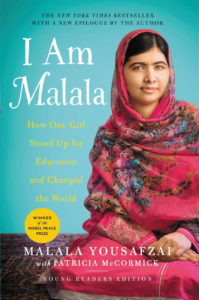 Starting with the ‘Prologue: The Day My World Changed’ Malala states, “I come from a country that was created at midnight, when I almost died it was just after midday“. Reading that, my imagination and curiosity had me hooked. What does this thirteen year old wants us to envision and learn. We have read about her in the news that she was shot in the face while riding the school bus and miraculously survived.
Starting with the ‘Prologue: The Day My World Changed’ Malala states, “I come from a country that was created at midnight, when I almost died it was just after midday“. Reading that, my imagination and curiosity had me hooked. What does this thirteen year old wants us to envision and learn. We have read about her in the news that she was shot in the face while riding the school bus and miraculously survived.
Aside from the saga of her bravery and recovery, Malala talks about her culture, her faith, politics and history of the Taliban. Malala also shows us family life, its joys and struggles in a remote village in Swat Valley, Pakistan, once a home to Buddhist kings. She tells us about her father’s quest for equal education for girls. As her story moves, one learns about customs and taboos while children grow-up, go to school and play.
Gain some prospective of that mysterious Middle Eastern World, its religion, culture and some history. The story is about one girl’s bravery, breaking social taboos to fight illiteracy to gain equal education for girls. I found it to be a very special read.
Lois’s Pick:
June 2014
The Goldfinch
Donna Tartt
Published October 2014
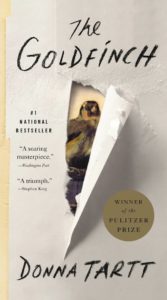 Aspiring readers, do not be daunted by the length of this book. At almost 800 pages, it is well worth the read, for the story it tells, the characters that populate it, and the moods it evokes. This Pulitzer Prize winning novel has, as its central event, a terrorist attack on the Museum of Metropolitan Art in New York City. Our adolescent protagonist, Theodore “Theo” Decker is with his beloved mother on their way to school to discuss his recent suspension. They duck into the museum to escape the rain when a bomb explodes in the gallery they are walking through. Theo awakens in the rubble among the injured and dying. Frightened and dazed, he picks his way through the devastation. As he is leaving, he is stopped by a dying man and given a small signet ring for safekeeping; the man also points to the small picture that wasTheo’s mother’s favorite, Carel Fabritius’ The Goldfinch, which has been knocked from the wall but is miraculously intact. Theo takes the ring and the painting as he leaves the museum. When his mother does not return to their apartment, you experience with Theo the anxiety, the dread, and finally, the grief of her death. Tartt writes vividly and movingly of grief and of the unmooring it brings, particularly for a child. All that Theo is and much that he will become stems from his grief and from the memory of his mother.
Aspiring readers, do not be daunted by the length of this book. At almost 800 pages, it is well worth the read, for the story it tells, the characters that populate it, and the moods it evokes. This Pulitzer Prize winning novel has, as its central event, a terrorist attack on the Museum of Metropolitan Art in New York City. Our adolescent protagonist, Theodore “Theo” Decker is with his beloved mother on their way to school to discuss his recent suspension. They duck into the museum to escape the rain when a bomb explodes in the gallery they are walking through. Theo awakens in the rubble among the injured and dying. Frightened and dazed, he picks his way through the devastation. As he is leaving, he is stopped by a dying man and given a small signet ring for safekeeping; the man also points to the small picture that wasTheo’s mother’s favorite, Carel Fabritius’ The Goldfinch, which has been knocked from the wall but is miraculously intact. Theo takes the ring and the painting as he leaves the museum. When his mother does not return to their apartment, you experience with Theo the anxiety, the dread, and finally, the grief of her death. Tartt writes vividly and movingly of grief and of the unmooring it brings, particularly for a child. All that Theo is and much that he will become stems from his grief and from the memory of his mother.
The whereabouts of Theo’s father are temporarily unclear, as he has vanished from the life of his wife and child. Theo is taken in by the posh family of a school acquaintance. He is consumed by his memories of his mother, but also by the small picture he so diligently safeguards, never revealing its existence to another soul. He follows the clues given to him by the owner of the signet ring and in doing so, meets Hobie, a furniture restorer who will become an enduring friend.
His father, an alcoholic and compulsive gambler, eventually claims him and takes him to Las Vegas, which furthers his grief by disconnecting him from all that he has known. The portrait of the Las Vegas exurbs is vividly drawn—empty tract homes slowly being reclaimed by the desert. With no adult supervision, Theo is left to his own devices and in charge of a tiny neglected dog, Popper. He soon takes up with Boris Pavilkovsky, a classmate. Their teenage days are spent aimlessly, often fueled by beer and marijuana. Thanks to the shenanigans of Theo’s Dad, they are introduced to the Russian mob. It is during this interlude that the magnitude of Theo’s loss is clearest, at least to the reader.
Theo eventually makes his way back to New York with his treasured painting and Popper, settling in with Hobie to begin life as a young man in New York City. But he is still haunted by the memory of his mother and his choices are circumscribed by his sorrow.
Occasionally, the coincidences in this book seemed too extreme and the tremendous detail provided about furniture restoration, while interesting, could have benefitted from some editing. On the whole though, this was a wistful book that made me think about what might have been.
Bill’s Pick:
May 2014
Naked Statistics
Charles Wheelan
Published 2014
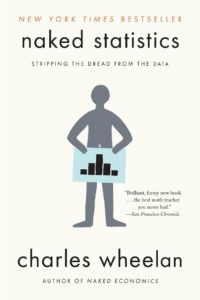 Sometimes it’s good to get out of your comfort zone. Charles Wheelan’s Naked Statistics: Stripping the Dread from the Data (Norton, 2014) is a rewarding opportunity to do so. If you are not a pollster, researcher, or student, you probably don’t have a burning desire or need to think about the difference between a mean (the average of a group of data) and a median (the point that divides a set of numbers or observations in half, so that half are above it and half below it). But, if you pick up his book, which is now available in paperback, that’s where you will start. At the finish, after moving through probability, the central limit theorem, and inference, you will have an understanding of regression analysis, which Professor Wheelan describes as “an awesome statistical tool . . . that enables us to find . . . in large data sets” key patterns that are important to research in medicine and the social sciences.
Sometimes it’s good to get out of your comfort zone. Charles Wheelan’s Naked Statistics: Stripping the Dread from the Data (Norton, 2014) is a rewarding opportunity to do so. If you are not a pollster, researcher, or student, you probably don’t have a burning desire or need to think about the difference between a mean (the average of a group of data) and a median (the point that divides a set of numbers or observations in half, so that half are above it and half below it). But, if you pick up his book, which is now available in paperback, that’s where you will start. At the finish, after moving through probability, the central limit theorem, and inference, you will have an understanding of regression analysis, which Professor Wheelan describes as “an awesome statistical tool . . . that enables us to find . . . in large data sets” key patterns that are important to research in medicine and the social sciences.
The writing is crisp and clear with a variety of practical and humorous examples, not the least of which is the continuing saga of two busloads of travelers – a group of marathon runners and another group composed of sausage festival participants. And, for those of us of a certain age familiar with the television show “Let’s Make a Deal,” hosted by Monty Hall, Professor Wheelan explains why probability supports switching from the door originally chosen from the three offered to the one remaining after Hall revealed the “goat” or other “bad” prize behind one of the other two.
Professor Wheelan, who teaches public policy and economics at Dartmouth College, explains the statistical concepts in easily understood language. Formulas are kept to a minimum and intuitive explanations are emphasized. Readers who want more specificity or fuller calculations can generally find them in an appendix at the end of the relevant chapter. For students in a basic statistics course, the book would likely prove useful as a supplement to the course text.
In addition to focusing on basic statistical concepts, Professor Wheelan presents the case for the relevance of statistics to our daily lives. He concludes his clever and informative book with a chapter outlining the manner in which the statistical tools introduced in Naked Statistics can be used to address currently significant social issues, including the future of football as related to present-day knowledge about concussions, identifying and rewarding good teachers and schools, and individual privacy.
Challenge your comfort! Read Naked Statistics.
Barbara’s Pick:
April 2014
Proof of Heaven
Eben Alexander, MD
Published 2012
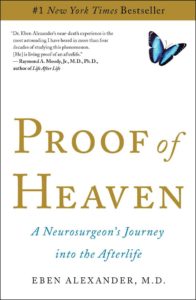 I am always looking for a good read, so I tend to linger in the book section of Costco to see what’s new. My tastes are usually historical fiction or biography, but I recalled that Eben Alexander’s “Proof of Heaven” was on my book group’s “possible” list, so I picked it up. It was especially appealing because it’s relatively short, only 208 pages.
I am always looking for a good read, so I tend to linger in the book section of Costco to see what’s new. My tastes are usually historical fiction or biography, but I recalled that Eben Alexander’s “Proof of Heaven” was on my book group’s “possible” list, so I picked it up. It was especially appealing because it’s relatively short, only 208 pages.
In neurosurgeon Alexander’s memoir, he takes on the discord between the worlds of science and spirituality. Part medical mystery and part spiritual experience, the book chronicles Alexander falling ill to bacterial meningitis and being in a coma for 7 days. By all rights he should not have lived, much less fully recover. Interspersed with chronological detail of the week he was unconscious, he vividly describes his near death experience (NDE) and eventual journey back to the living.
Alexander admits he was not a religious person prior to the NDE, so his experience while in the coma was surprising to him. He feels that he was chosen to live through the NDE in order to explain its authenticity; he has studied the brain throughout his career, so he is able to skillfully rebut the scientific claims that he had been hallucinating in his coma.
You don’t have to be a believer or a science nerd to enjoy this book. It’s made for discussion since it seems to strike everyone differently.
Arnie’s Pick:
March 2014
The Fifties
David Halberstam
Published 1993
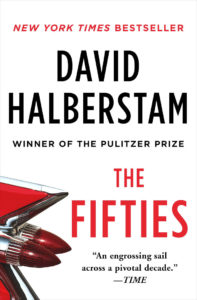 So many enjoyable reads result from one reader recommending a book to a friend. Discussing plans to work less and read more, a friend at work suggested to me David Halberstam’s 1993 New York Times’ bestseller. A long, cold winter was a perfect opportunity to curl up with this readable volume.
So many enjoyable reads result from one reader recommending a book to a friend. Discussing plans to work less and read more, a friend at work suggested to me David Halberstam’s 1993 New York Times’ bestseller. A long, cold winter was a perfect opportunity to curl up with this readable volume.
While the author discusses subjects beyond the boundaries of the United States, the book could best be titled “The Fifties in America”.
Seven hundred and thirty three pages provide Halberstam an opportunity to write an encyclopedic survey of people and events, but choices had to be made as to what to include and what to exclude. Personalities range from Truman to Kennedy, Elvis to Marilyn Monroe. Social changes, including the civil rights movement, the pill, and effects of television all receive easily read and understood chapters. Despite the 733 pages, the book reads like a series of newspaper articles.
Halberstam’s work provides a broad picture of the changes during this mid-century decade. Although the author does not provide specific theses, the book helps the reader to understand the basis of events in the following decades.
Whether you were a teenager in the 1950’s, with other ideas about “curling up”, or much younger, now is a fine time to get this book from our library and learn why this decade was such an influential basis for our 21st century world.
Chris’s Pick:
February 2014
The Golem and the Jinni
Helene Wecker
Hardcover: 486 pages
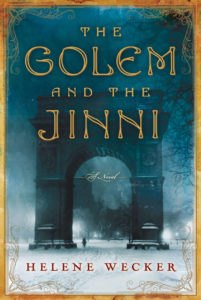 The Friends challenged me to review a love story this month, it being Valentine-February. My first response was that I generally do not read love stories—at least I do not seek them out…. But then I remembered one of my favorite books of the past year: The Golem and the Jinni. Weird and wonderful, inventive, magical, and yes, a love story, this is Helene Wecker’s first novel. She has managed to satisfy all that I look for in a great read: beautifully drawn characters, historical references, and writing so thoughtful it makes you consider The Questions in life. What does it mean to be human? Are we living or merely existing? Are we living to our full capacity? Any book that can stop you in your tracks, that can force you into awareness, takes my breath away. For those of you who love a synopsis, here is one I lifted from “Goodreads”:
The Friends challenged me to review a love story this month, it being Valentine-February. My first response was that I generally do not read love stories—at least I do not seek them out…. But then I remembered one of my favorite books of the past year: The Golem and the Jinni. Weird and wonderful, inventive, magical, and yes, a love story, this is Helene Wecker’s first novel. She has managed to satisfy all that I look for in a great read: beautifully drawn characters, historical references, and writing so thoughtful it makes you consider The Questions in life. What does it mean to be human? Are we living or merely existing? Are we living to our full capacity? Any book that can stop you in your tracks, that can force you into awareness, takes my breath away. For those of you who love a synopsis, here is one I lifted from “Goodreads”:
(This is) the dazzling tale of two supernatural creatures who appear mysteriously in 1899 New York. Chava is a golem, a creature made of clay, brought to life by a strange man who dabbles in dark Kabbalistic magic. When her master dies at sea on the voyage from Poland, she is unmoored and adrift as the ship arrives in New York Harbor. Ahmad is a jinni, a being of fire, born in the ancient Syrian Desert. Trapped in an old copper flask by a Bedouin wizard centuries ago, he is released accidentally by a tinsmith in a Lower Manhattan shop. Though he is no longer imprisoned, Ahmad is not entirely free – an unbreakable band of iron binds him to the physical world. The Golem and the Jinni is their magical, unforgettable story; unlikely friends whose tenuous attachment challenges their opposing natures – until the night a terrifying incident drives them back into their separate worlds. But a powerful threat will soon bring Chava and Ahmad together again, challenging their existence and forcing them to make a fateful choice.
There is a fairy-tale quality to the story that is charming, but it is also a serious, literary work. Wecker uses folklore to give us a history of two very different cultures, and uses her fanciful characters to describe the immigrant experience, offering a fascinating look at New York at the turn of the century. I loved this book because it was so different from anything I have read in years. I do highly recommend The Golem and the Jinni as February’s, or any month’s, love story.
Karen’s Pick
January 2014
The Signature of All Things
Elizabeth Gilbert
Hardcover: 512 pages
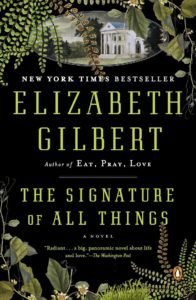 Alma Whittaker is a homely, intelligent, inquisitive, privileged, self-assured young girl, who is on a constant search for answers (and questions) of all things and in doing so becomes a world traveller and brilliant botanist. Her emancipation and evolution is fully developed through Gilbert’s compelling and painstakingly research novel. In this work of historical fiction, Gilbert’s writing seems to borrow from Dickens’ Great Expectations, Alcott’s Little Women (think Jo March), and Darwin’s Voyage of the Beagle! The melding of 19th century science, commerce, and unforgettable characters are done seamlessly and so expressively that Gilbert draws us into the story almost immediately. There were (most) points in the book that I felt I was transcended to the environs inhabited by Alma and the Whittaker Family. At times Gilbert’s writing can seem be a bit “wordy” but you soon appreciate how her elegant choice of words helps paint a rich and vivid story and her obvious mastery the of “Victorian –Style” writing pattern further authenticates the book.
Alma Whittaker is a homely, intelligent, inquisitive, privileged, self-assured young girl, who is on a constant search for answers (and questions) of all things and in doing so becomes a world traveller and brilliant botanist. Her emancipation and evolution is fully developed through Gilbert’s compelling and painstakingly research novel. In this work of historical fiction, Gilbert’s writing seems to borrow from Dickens’ Great Expectations, Alcott’s Little Women (think Jo March), and Darwin’s Voyage of the Beagle! The melding of 19th century science, commerce, and unforgettable characters are done seamlessly and so expressively that Gilbert draws us into the story almost immediately. There were (most) points in the book that I felt I was transcended to the environs inhabited by Alma and the Whittaker Family. At times Gilbert’s writing can seem be a bit “wordy” but you soon appreciate how her elegant choice of words helps paint a rich and vivid story and her obvious mastery the of “Victorian –Style” writing pattern further authenticates the book.
Alma put the magnifying lens to eye and looked again. Now the miniature forest below her gaze fell into majestic detail. She felt her breath catch. This was the Amazon jungle as seen from the back of a harpy eagle. She rode her eye above the surprising landscape, following its path in every direction. Here were rich, abundant valleys filled with tiny trees of braided mermaid hair and minuscule, tangled vines.
I marveled at Alma’s ability to deal with the many challenges and obstacles she faces but which never deters her extraordinary quests. She is an engrossing woman, of extraordinary ability and determination. Her life’s journey towards enlightenment is somewhat circuitous- filled with twists, turns, and surprises, which is why I could not put this book down. I highly recommend Elizabeth Gilbert’s The Signature of All Things. It is one of my favorite novels of all time.
